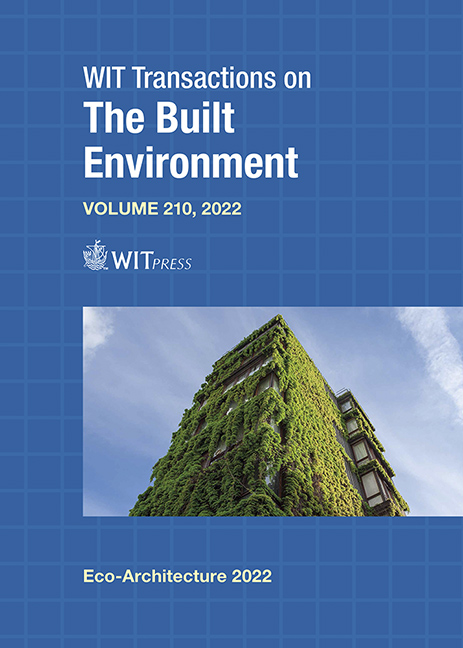KEY FACTORS OF OCCUPANTS’ BEHAVIOUR CHARACTERISTICS AND INDOOR AIR QUALITY PERCEPTION ON OCCUPANCY COMFORT IN MULTISTOREY RESIDENTIAL BUILDINGS IN THAILAND
Price
Free (open access)
Transaction
Volume
210
Pages
13
Page Range
63 - 75
Published
2022
Paper DOI
10.2495/ARC220061
Copyright
Author(s)
WARANGKANA JUANGJANDEE, VICKI STEVENSON, ESHRAR LATIF
Abstract
Multi-storey residential buildings in high-density urban areas, especially in a tropical climate like Thailand, tend to suffer poorer indoor environmental quality. Such a significant impact increases the risks of health issues. However, there has been little study exploring the reason and identifying potential solutions. This research tackles the problems of thermal comfort and indoor air quality (IAQ) in multi-storey residential buildings in high-density urban areas (2,400 people/km2) in Chiang Mai, Thailand (equatorial, winter dry climate). The survey explored occupants’ behaviour characteristics in relation to their indoor air quality and comfort perceptions. 482 responses from adult occupants were received (400 responses were required for results to have a 95% confidence level). Cronbach’s alpha, Spearman’s rank, Pearson correlation coefficient and stepwise multiple regression analysis methods were applied to analyse data; the five key results are summarised as follows: (1) five critical factors for overall comfort satisfaction were identified as temperature, natural lighting, ventilation, room privacy, and humidity (in order of importance); (2) activities which generate moisture (e.g., washing clothes, hanging clothes to dry, cooking) have a strong negative correlation with IAQ perception; (3) factors such as natural lighting and ventilation had a significant positive relationship with IAQ, while humidity and mould had a negative relationship with the IAQ; (4) natural lighting and air freshness were the strongest influences on occupant’s humidity comfort; and (5) ventilation and air freshness positively correlate with ventilation comfort, whereas humidity negatively correlated with the comfort (at a significant level). This study proposes design guidelines to improve the comfort. Built environment professionals from Thailand will be consulted on the proposed design, which may assist architects and engineers in generating IAQ improvement for their occupants, achieving indoor comfort.
Keywords
occupants’ behaviour, occupancy comfort, multi-storey residential building, surveying, indoor air quality, questionnaire





